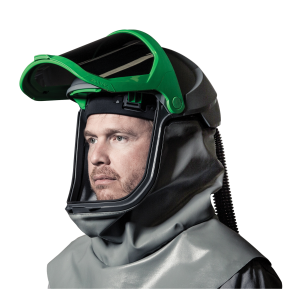Every business should be putting the safety of it’s welders first. RPE provides the ultimate level of protection to keep welders safe from exposure to weld fumes – Fumes that are likely to cause chronic long-term damage. The use of RPE should be part of the safety measures implemented by business owners or those with a responsibility for health & safety in the workplace.
Compliance
The Health and Safety Executive (HSE) exists to provide safety measures to keep people safe at work.
In February 2019, the HSE issued the STUS1 bulletin which targets all workers, employers, self-employed, contractors’ and any others who undertake welding activities, including mild steel, in any industry.
The HSE has been proactively writing to businesses making them aware of the health concerns, the control measures, regulations & compliance and their intention to prosecute should the business fail to comply.
The HSE is now more visible, visiting businesses unannounced and clamping down on business owners that are not putting control measures in place to protect the health and safety of their employees.
Health Risks
Occupational lung-related diseases kill 12,000 UK workers and 400,000 working days are lost per year. Weld fumes are now internationally classified as possibly carcinogenic to humans.
You need to be aware that personal exposure to all welding fume has the capability of causing serious conditions these are particularly prevalent within the manufacturing industry.
Welders are particularly at risk when it comes to airborne contaminants. The hazards of contaminant exposure can affect welders through inhalation, dermal absorption or ingestion, resulting in respiratory, digestive, nervous and reproductive disorders.
If you carry out any type of welding activity as part of your work, you need to understand the associated health risks;
> Lung and kidney cancer from both mild and stainless steel weld fumes,
> Asthma and other forms of lung damage from metalworking fluid mist
HSE Focus in 2020
For welders, manganese, present in mild steel, is the most dangerous of components. It can cause neurological effects similar to Parkinson’s disease.
HSE inspectors are particularly focusing on manganese as a priority in 2020.
Who Suffers as a Result of Over Exposure?
Welders are the people whose health is threatened by weld fumes. Employers may suffer too if they fail to take the appropriate steps to protect their workers.
An ongoing assessment of weld fumes and smoke is required to make sure they are below the acceptable exposure limits.
Employers shown to be negligent can face prosecution.
By issuing your workers with the right RPE, you’ll be able to demonstrate that you are properly protecting your workers’ health. Plus, you want a satisfied visiting HSE inspector.
Respiratory Protective Equipment
RPE is recommended for all types of welding even in a well-ventilated area.
AIR FED welding helmets with a built-in respirator are one of the best ways to protect a welder’s lungs from harmful weld fumes.
During the welding process, the battery-powered welding kit is mounted on the waist belt. It delivers purified air to the welder via the flexible hose at the back of the unit.
The filtered air can help to keep the welder cool and would be more comfortable to wear for longer periods of time.
Whilst the the welding helmet visor protects the eyes and head.
The Z-Link+® welding respirator includes the large ADF lens with the 1.1.1.1. rating in optical quality. The all-important fourth “1”, advanced angular dependence control, guarantees uniform shading and distortion-free vision. This allows you to work comfortably and effortlessly for hours across different angles.
Powered air respirators provide protection in the workplace and allow you to carry on with the job in hand without worrying about breathing in weld fumes.
Download Our Welding Guide





